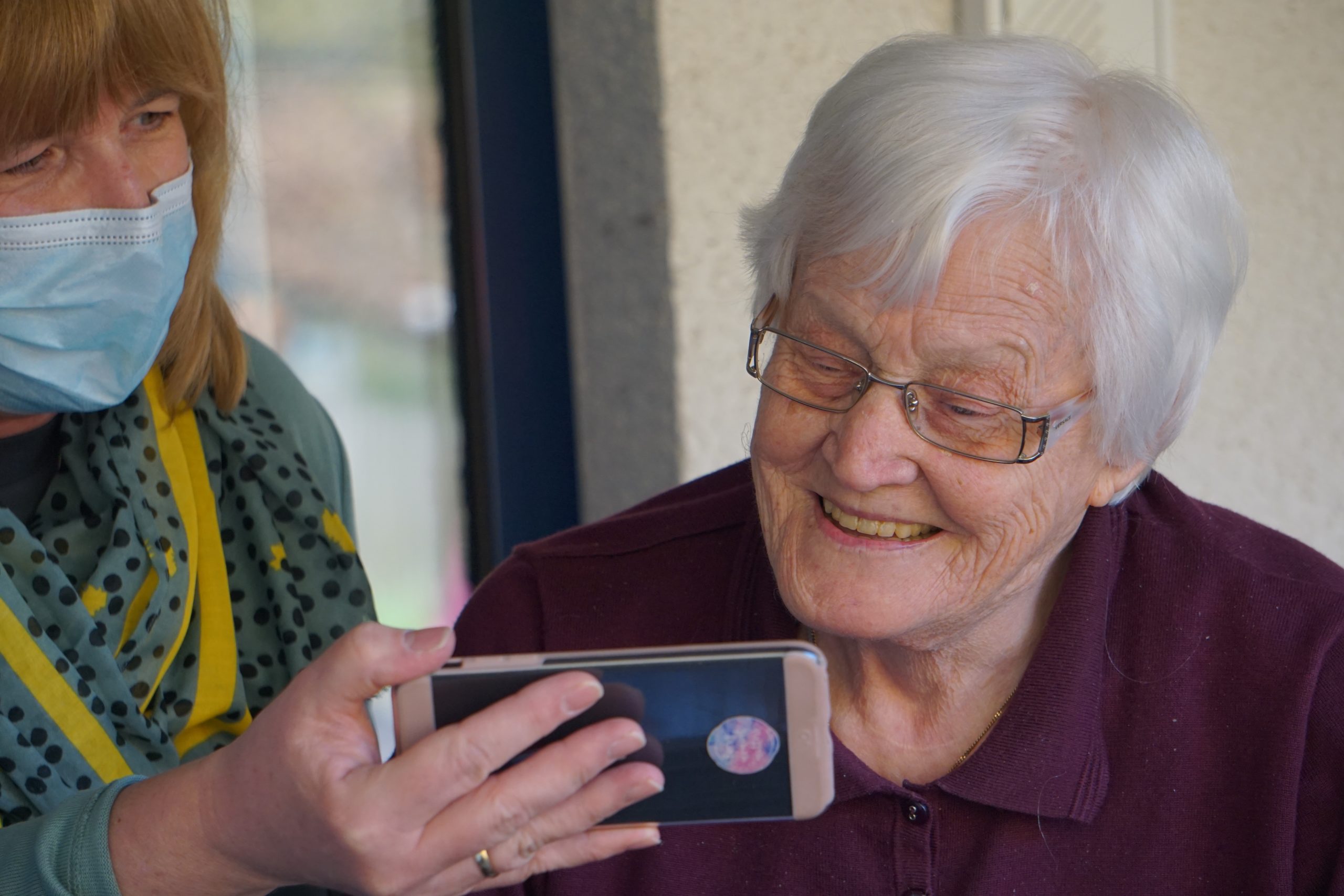
Staying connected with your loved one who lives in an assisted living community can sometimes feel like a daunting task. As much as you’d like to always be there, busy lives, distance and other factors often prevent families and friends from spending as much time together. The COVID-19 pandemic threw another big curve ball when it started preventing and restricting in-person visitation. With the dynamics of our everyday life changing so much recently, it is important to have different ways to stay in touch and check in with one another.
There are so many ways to show your loved ones they are on your mind. Here are some of the most successful strategies we use at our Castle Senior Living communities:
Schedule Regular In-Person Visits: If you’re lucky enough to live nearby, a weekly or biweekly visit is a great way to check in and spend time together. These could be Sunday dinners or maybe a game night. Most communities have a recreational area where a family can gather together for some sort of activity. If you live a little further away, perhaps it is monthly visit instead. No matter what, it is important to have it scheduled and be a regular occurrence.
Whether it’s due to distance or restrictions on in-person visitation, remember virtual visits are always an option. Having these scheduled visits on a calendar gives your loved one (and you) something to look forward to. This provides comfort on days when you miss one another and helps add structure to a resident’s life.
Virtual Visits: Ever since COVID-19 began to make an impact, most of us were forced to become familiar with virtual visits. The good news is that the technology is there to make this so much easier. Whether you use Zoom, Facetime or something else, you can interact with real-time communication even if you are 1,000 miles apart.
Treat virtual visits like in-person visits and schedule them. Choose a platform that most are comfortable with or perhaps the community already has in place for virtual visits. Staff and caretakers can even help out if needed. While you can’t hug through Zoom, seeing faces and hearing voices help keep everyone feel more connected.
Photo Sharing Apps: Google Photos or Flickr are good ways for your loved one to feel like they aren’t missing out, especially if they can’t attend certain events due to health reasons. It is so special to our loved ones for them to still be able to “see” their grandkids’ soccer games and dance recitals. These apps can be paired with a frame/stand and then the photos will automatically appear when different family members upload photos to the app.
Care Packages: Who doesn’t love to receive a package? You can always drop off a care package at the community or send it via the mail. This helps ensure that your loved one has all the essentials including their favorite music, favorite snacks, puzzles, books, etc.
Call Them More Often: You can always call more often. The calls don’t have to be long, but frequent phone conversations will remind them that you are thinking of them. Simply chatting about what your dog did that day or a new book you’re enjoying helps connect them with your everyday life. It also presents your loved one the opportunity to fill you in on their daily activities and life in their community.
Interact on Social Media: This one may seem odd, but we promise you, many seniors use social media with ease and often post photos of their family and even memes. Facebook is particularly popular, with 41% of seniors aged 65 and older using the platform. Whatever the social media platform is, it is a great way for your loved ones to see photos of family events, see grandkids reach milestones or just have some fun conversations.
Write a letter: This is an oldie, but a goodie! Everyone likes to receive a letter or a note in the mail – there is just something more authentic to it. Writing letters can be a great way to stay connected, especially if your loved one is not comfortable with technology. Taking the time to write a letter will be sure to make them smile.
One of the more difficult things about having a loved one in a senior living community is that you might not spend as much time with them as you’d like. Keeping in touch is important because it helps to prevent depression and loneliness and reminds them that you care and think about them. It doesn’t matter what form (or combination) of communication you select, your loved one will appreciate it and it will surely make their day brighter.

